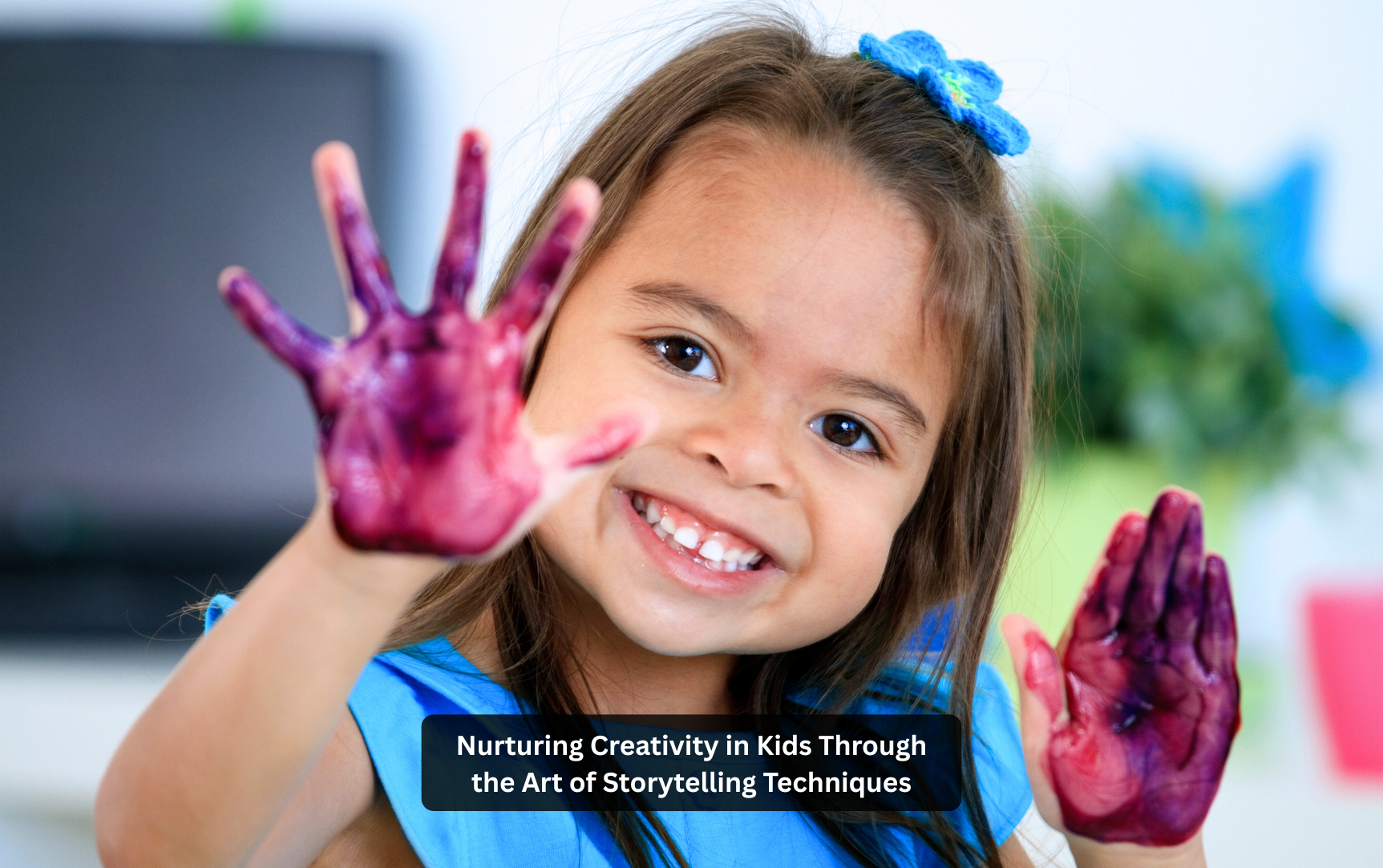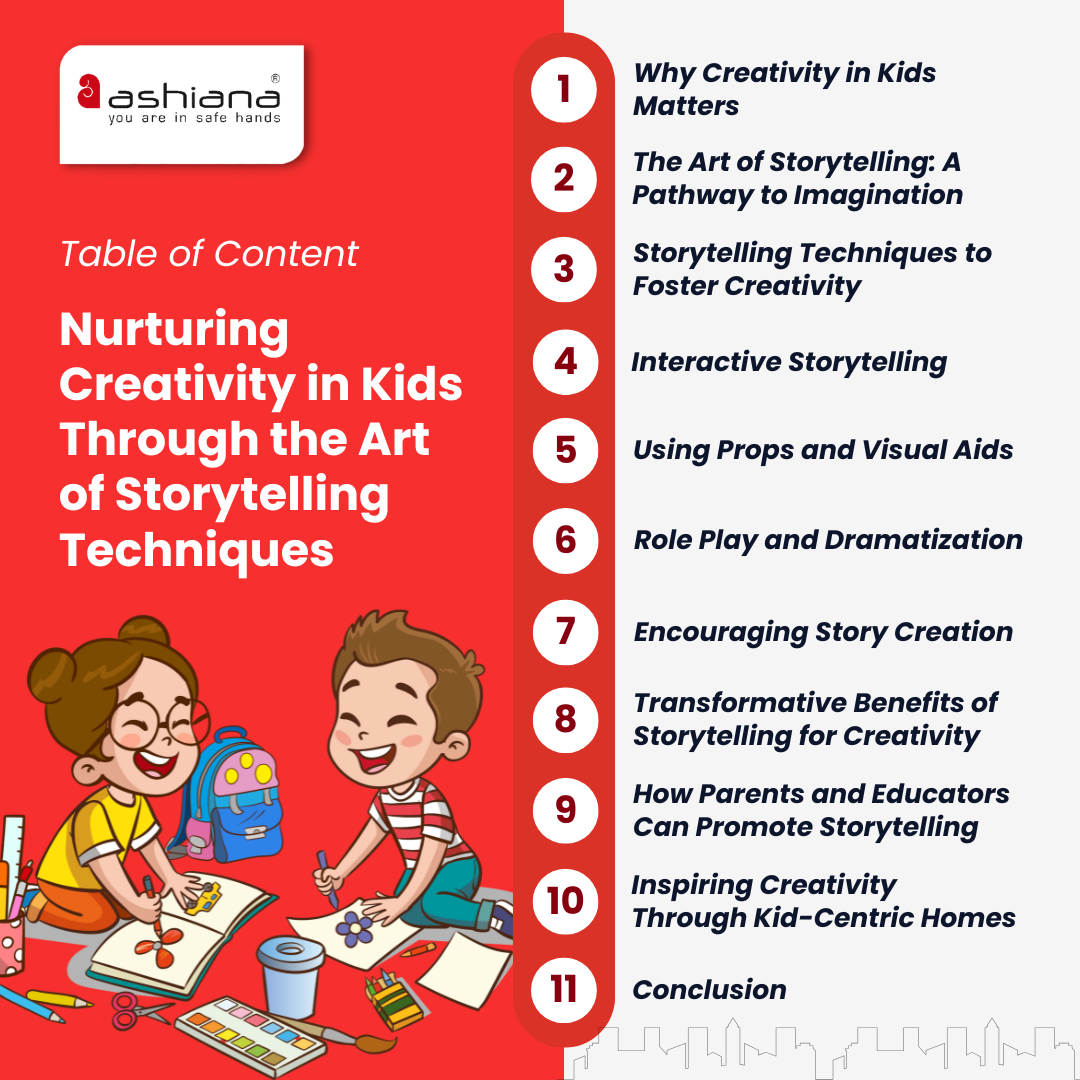

Storytelling allows kids to imagine scenarios, develop characters, and explore unique ideas. It engages their cognitive abilities, improves problem-solving skills, and fosters creative thinking by encouraging them to visualize and express their thoughts.
Storytelling techniques improve communication skills, boost vocabulary, and enhance emotional intelligence. They also help children develop empathy and confidence, nurturing their overall creativity and self-expression.
Parents can encourage creativity in kids by using engaging storytelling techniques like role-playing, interactive storytelling, and creating personalized stories. Incorporating visual aids, props, and creative writing exercises can make the activity more fun and inspiring.
Ashiana, Ashiana Housing build homes. Homes surrounded by vast green spaces and fresh breeze. Homes cocooned in secured gated complexes. Homes where futures are forged and there are opportunities to grow. And Homes in environments brimming with healthy activity, trust and respect. At heart, we build communities with care.
Other posts by Ashiana
Join 1000+ of fellow readers. Get expert real estate knowledge straight to your inbox absolutely free. Just enter your email address below.